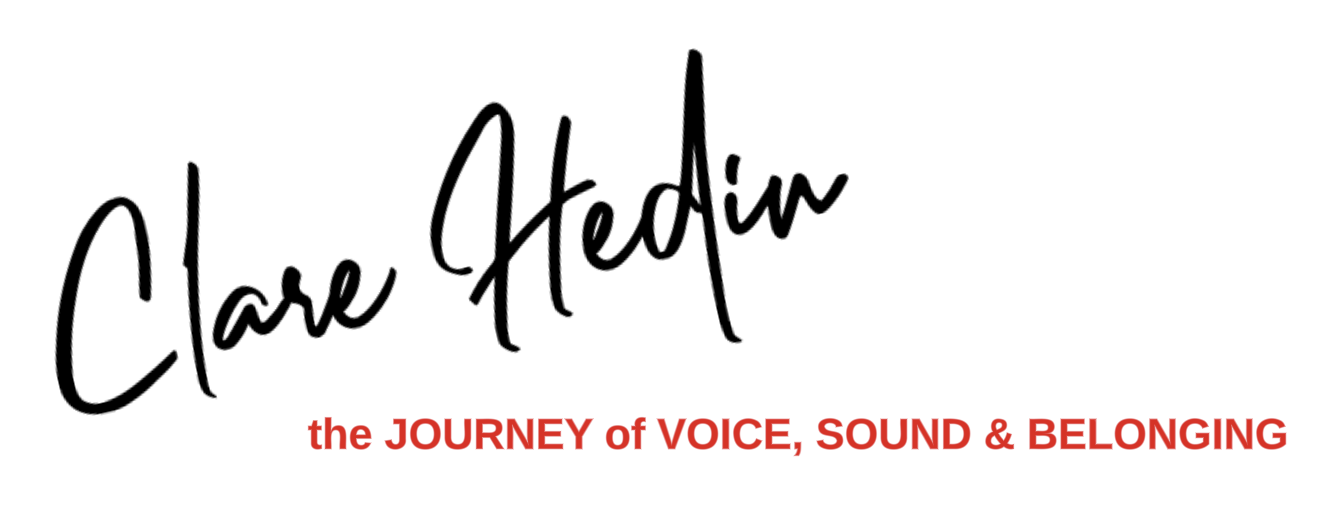
Sound’s story. 2) What is sound… the mechanics?
Sound is a wave movement that we can hear. It has to travel through a medium. And it has to create resonance in a receiver (e.g. your ear) in order to be ‘heard’. Three of the most commonly known mediums that I wish to refer to in this paper are air, water, and earth. Those three mediums are made up of molecules, which are made up of atoms. Within a given medium the density of that medium is influenced by its own mass, temperature, and pressure. The density and temperature affect the speed at which sound can travel through it. In the air, sound travels at approximately 1100 ft/second, in water it travels at approximately 5,000ft/second, and in the earth at approximately 8,000 ft/second. The number of times a wave passes a certain point per second is its frequency, which is measured in Hertz (Hz). Frequency is commonly referred to as ‘pitch’, i.e. the actual sound that we hear (e.g. the musical note ‘a’ or ‘c#’). The distance between each wave motion is its wavelength; it is a measure of the distance between each pulsing compression of molecules within a given medium. The relationship between a sounds’ wavelength and its frequency will give us the speed at which it is traveling, aka its velocity. Longer wavelengths are able to travel further distances than shorter wavelengths. Sound can travel faster through a dense medium than a less dense medium as the energy has less far to travel between the more tightly packed molecules and therefore less of its kinetic energy is lost in the transformation to heat energy.
Sound occurs when a medium is disturbed energetically and that disturbance is then projected through the medium by the compression and the rarefication (coming together and stretching apart) of its molecules. The efficiency (speed and distance) with which a sound can travel is dictated by the elasticity of the medium and the more compacted something is, the more elastic it is seen as being, with the molecules more tightly packed together. A measure of somethings’ elasticity is a measure of how quickly a disturbed medium is able to come back to itself – return to its original shape and form – however microscopically small-scale it might be to us, i.e. beyond our ability to actually perceive the movement with our naked eye.
To take a step back from this for a moment, I wish to also comment on vibration, as one of my questions was about the relationship between sound, frequency, and vibration – what do they have in common and where do they differ? And are sound and light related?
Sound and light are both an expression of vibration. Whereas sound is mechanical in nature in order for us to hear it, (our ears are also mechanical, in that an inner membrane resonates with the incoming sound which then gets translated by our brains into pitch, patterns, and information), light is part of an electromagnetic spectrum and does not require an elastic medium to travel through. It also travels much faster than sound, at 186,000 miles/second.
As Randall McClellan says in his book, The Healing Forces of Music,
At 44oF the speed of sound increases to 1100 feet per second (750 miles per hour), which is still very slow when compared to the speed of light, 186,000 miles per second. It takes only between eight and nine minutes for the light from the sun to reach the earth, yet a sound originating from the sun would not reach us for 591.4 days. (p. 19)
Light travels through space as it journeys from the sun to earth. Like sound, light is known to travel in waves (although they are of a different nature) – even though its speed is so different. There is a spectrum, known as the electromagnetic spectrum (ES) through which we can see the various wavelengths of rays of light, and distinguish their features. Light travels in a direction (whereas sound radiates out at 360o and is termed as naturally ‘omni directional’). The ES is a way of acknowledging the differing wavelengths of light. Compared to sound waves, the frequency of light waves is short, as are the wavelengths it tends to travel in. Although both light and sound travel in waves, the nature of each wave is different. Sound travels as a longitudinal wave (i.e. the molecules move back and forth – vibrate – in the same direction as that of the wave and are, as previously mentioned, mechanical) and light travels as a transverse wave, in an electromagnetic field. A transverse wave is one in which the energy moves vertically rather than horizontally.
Integrated Publishing state this in their Naval Electrical Training Series1 on the subject of light, sound, and vibration;
There are two main differences between sound waves and light waves. The first difference is in velocity. Sound waves travel through air at the speed of approximately 1,100 feet per second; light waves travel through air and empty space at a speed of approximately 186,000 miles per second. The second difference is that sound is composed of longitudinal waves (alternate compressions and expansions of matter) and light is composed of transverse waves in an electromagnetic field. Although both are forms of wave motion, sound requires a solid, liquid, or gaseous medium; whereas light travels through empty space. The denser the medium, the greater the speed of sound. The opposite is true of light. Light travels approximately one-third slower in water than in air. Sound travels through all substances, but light cannot pass through opaque materials.
Frequency affects both sound and light. A certain range of sound frequencies produces sensations that you can hear. A slow vibration (low frequency) in sound gives the sensation of a low note. A more rapid sound vibration (higher frequency) produces a higher note. Likewise, a certain range of light frequencies produces sensations that you can see. Violet light is produced at the high-frequency end of the light spectrum, while red light is produced at the low-frequency end of the light spectrum. A change in frequency of sound waves causes an audible sensation – a difference in pitch. A change in the frequency of a light wave causes a visual sensation – a difference in color. (p. 1-32)
When talking about the ES, the same site points out that;
Light is one kind of electromagnetic energy. There are many other types, including heat energy and radio energy. The only difference between the various types of electromagnetic energy is the frequency of their waves (rate of vibration). The term SPECTRUM is used to designate the entire range of electromagnetic waves arranged in order of their frequencies. The VISIBLE SPECTRUM contains only those waves which stimulate the sense of sight. (p. 1-33)
Starting at the highest frequency on the ES spectrum, we have, in descending order, gamma-ray waves, x-ray waves, ultraviolet waves, visible light waves (which make up about 2% of the entire spectrum), infrared waves, radio waves, and electric waves. These waves are measured in millicrons and/or Hz and have, like sound waves, frequencies and wavelengths. They are, in fact, photons, traveling as waves, through the vacuum of space initially and earth’s atmosphere, ultimately, where they begin to slow down. At this point, the atmosphere in which any waves find themselves becomes ‘cluttered’ enough with molecules to enable sound to become apparent as a mechanical form of information transmission (i.e. it is now in a medium in which it can be heard again). Sound is, however, distinct from light.
One final point on the physics of sound is with regard to radio waves which are electromagnetic in nature, i.e. they are still light, not audio, but they are at the low end of the frequency scale in terms of their speed. There are both AM and FM waves. AM radio starts at a frequency of approx. 640,000Hz.2 Radio waves, which travel at the speed of light, can be altered or modulated, to carry the characteristics of a sound wave. Engineers combine audio information with radio waves. With AM, it is the amplitude i.e. how loud the signal is, that conveys the information itself. This is a slightly vague way of communicating information and the medium itself invites static – the higher the amplitude the higher the noise to signal ratio. With FM, however, since it is the frequency that is being altered, it is a more efficient audio carrier, with less interference. In navy communications, the radio waves frequency bands most commonly used fall between 3kHz and 300 Ghz, although the “usable radio-frequency range is roughly 10 kilohertz to 100 gigahertz.”3 (p. 2-7).
Part 3 is coming!


